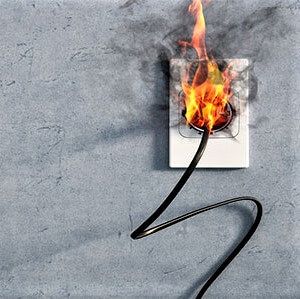
National Fire Prevention Week
Take steps to understand the risks and keep yourself and your family safe.
Just as we tackle Safety here at work, preventing accidents and injuries at home is about awareness and addressing potential hazards before an incident occurs.
This week, as we focus on Fire Prevention nationwide, here are some ways to keep yourself and your family safe:
COOKING
Did you know?
- Cooking is the leading cause of home fires and home fire injuries.
- Thanksgiving is the leading day for fires involving cooking equipment.
- The leading cause of fires in the kitchen is unattended cooking.
Steps to Stay Safe
- Stay in the kitchen when you are frying, boiling, grilling or broiling food.
- If you are simmering, baking, or roasting food, check it regularly and stay in the home.
- Always keep a lid nearby when cooking. If a small grease fire starts, slide the lid over the pan and turn off the burner. Leave the pan covered until it’s cool.
- Keep anything that can catch fire away from your stovetop.
- Loose clothing can hang down onto stove burners and catch fire. Wear short, close-fitting, or tightly rolled sleeves when cooking.
- Have a “kid-free zone” of at least 3 feet around the stove and areas where hot food or drink is prepared or carried.
SMOKE ALARMS
Did you know?
- Smoke alarms detect and alert people to a fire in the early stages.
- Smoke alarms can mean the difference between life and death in a fire.
- Working smoke alarms cut the risk of dying in a home fire in half.
Steps to Stay Safe
- Install smoke alarms in every sleeping room, outside each separate sleeping area and on every level of the home, including the basement.
- Test smoke alarms at least once a month using the test button.
- Make sure everyone in your home understands the sound of the smoke alarm and knows how to respond.
HEATING
Did you know?
- Heating equipment is one of the leading causes of home fires during the winter months.
- Space heaters are the type of equipment most often involved in home heating equipment fires.
Steps to Stay Safe
- All heaters need space. Keep anything that can burn at least 3 feet from heating equipment.
- Have a 3-foot “kid-free zone” around open fires and space heaters.
- Purchase and use only portable space heaters listed by a qualified testing laboratory.
- Have a qualified professional install heating equipment.
- Maintain heating equipment and chimneys by having them cleaned and inspected by a qualified professional at least once a year.
HAVING A PLAN CAN MAKE ALL THE DIFFERENCE
Taking time to draw up a fire escape plan – and practicing with your family – will make sure you’re prepared in the event of a fire emergency. Here’s how:
- Draw a map of each level of the home, showing all doors and windows.
- Go into each room with your family and identify all of the ways out.
- Discuss who will help children, older adults and people with disabilities wake up and get out, in the event of an emergency.
- Teach children how to escape on their own, in case you can’t get to them.
- Establish a meeting place outside and away from the home where everyone can meet after exiting.
- Have properly installed and maintained smoke alarms. Test them regularly so everyone is familiar with the sound.
- Conduct regular household fire drills.
- Practice what to do in case there is smoke: Get low, and go. Get out fast.
- Practice using different ways out and closing doors behind you as you leave.
- Never go back for people, pets or things.
- Go to your outdoor meeting place.
- Calling 9-1-1 or the local emergency number from a cell phone or a neighbor’s phone.
Get the family involved, and learn more on the National Fire Protection Association website at NFPA.org.
Safety First. Always. And, it starts with me.
